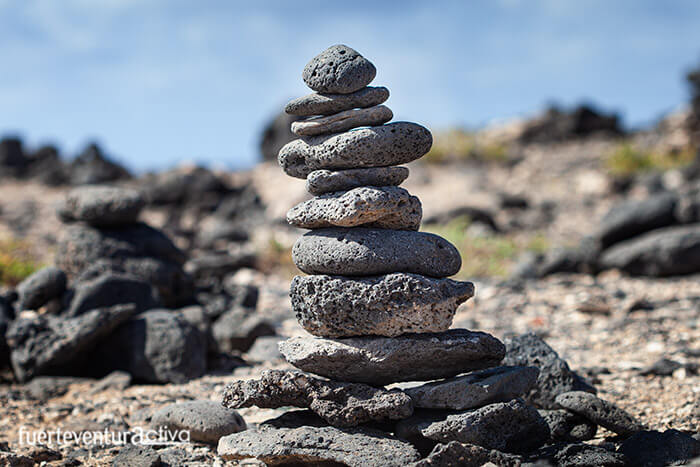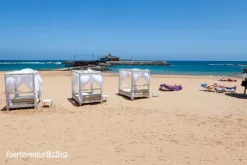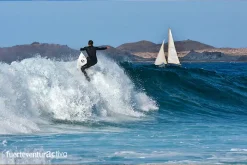LIFE IN FUERTEVENTURA, What to see in Fuerteventura ?
Why should you not make spirals or stone mounds in Fuerteventura?
If there is something that human beings like, it is to leave their mark on the places they visit. This has been happening for at least 500,000 years. Engravings, stone mounds, graffiti, and a great variety of ethno-cultural manifestations had their reason and meaning in the past.
However, the actions of people who are disrespectful to the natural environment have led to a series of actions that have resulted in not only a negative visual impact, but also lead to the disappearance of endemic vegetation, the spread of invasive species, or the alteration of archaeological sites of great value.
Today we want to draw your attention to certain actions that damage the natural habitat of Fuerteventura.
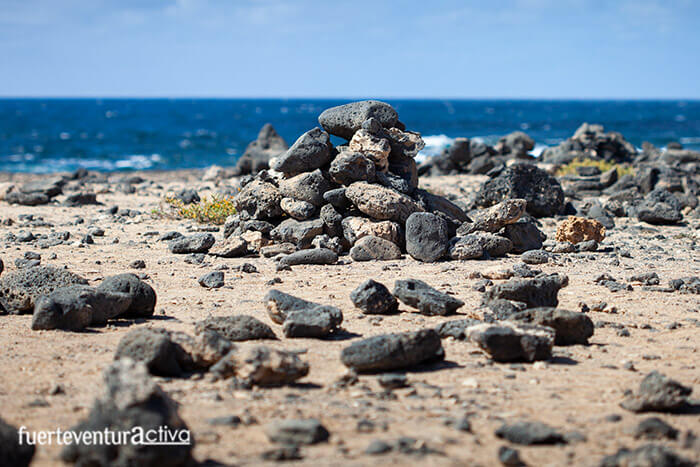
Stone mounds
Building stacked rock structures, taken from the surrounding landscape, has become very popular in many areas of the planet, including our beloved Fuerteventura.
Before telling you the reasons why you should not make these mounds of stones, we want to tell you something about them.
The stacks of stones in balance have several denominations, the best known perhaps being those of apachetas or apachitas, words of Quechua origin and whose meaning would come to be something like “Altar on the roads”. Other names to designate the stone mounds are Cairn, a word of Scottish Gaelic origin, and Doltap of Korean origin.
The tradition of making stone piles is not new. In fact, it is as old as human history. It extends all over the planet: from Asia to America and from Scandinavia to the South Pole.
These constructions have had different uses, standing out above all: The delimitation of the territory, demarcation of roads. But also a religious reason (pointing to places of worship, driving away evil spirits, burials, astronomical observation points, etc.)
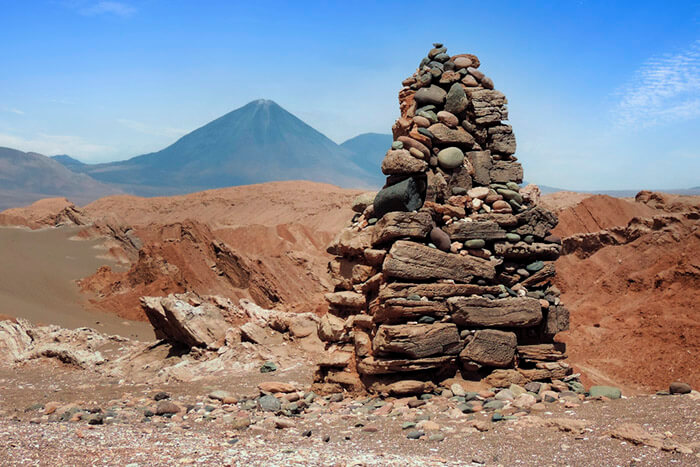
The act of piling up stones is, in a certain way, a way of sacralizing space. Originally, it used to be related to protection, health and permission to mother earth for the traveler to enter a new place.
In all cultures, from ancient Greece to pre-Columbian America, passing through the Celtic or the Asian, these altars were built in specific places. They were the product of a deep knowledge of geography, and even of social interaction with the natural environment.
Today, this custom of making mounds of stone anywhere, without any sense, and for the mere fact that it looks beautiful in the photos, is one of the actions that is doing the most damage to the ecosystem.
The stones that have been in their position for some time have generated a rich ecosystem of animals and plants around them. The microhabitat associated with surface rocks is of vital importance in arid landscapes such as that of Fuerteventura. These stones retain a large amount of moisture, and help its infiltration into the subsoil.
In addition, the thermal, hydric and structural conditions associated with rocks are essential for many terrestrial and aquatic species, which use these characteristics for their physical fixation in the case of plants and as places of rest, feeding or reproduction in the case of the animals.
The stones often harbor considerable numbers of endemic invertebrates. Moving, removing or breaking surface stones can cause an imbalance in the ecosystem, causing significant impacts on the organisms that inhabit them, even leading to their disappearance.
Various researchers have found that the arrangement of rocks influences the dynamics between predators and prey or between competitors.
For this reason, we ask you to act responsibly and do not move the stones around.
Especially aimed at those people who, with the excuse of offering a spiritual experience, move the stones making spirals or labyrinths with them. Total nonsense!!
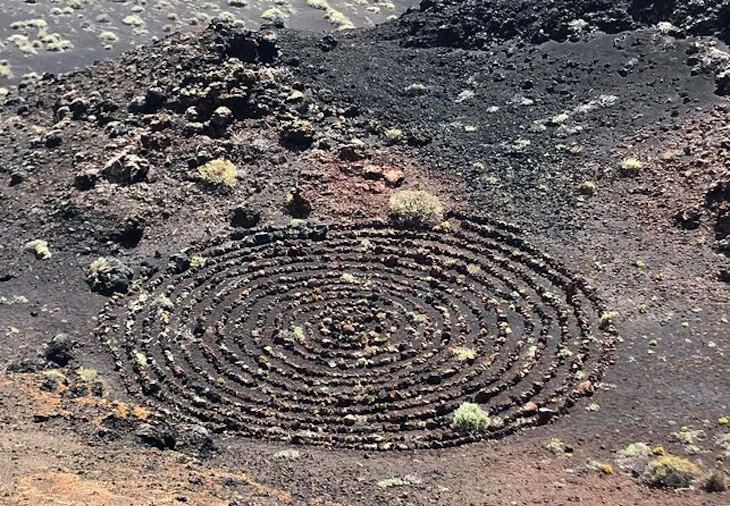
Are all the stone mounds that we see in Fuerteventura recent?
No, in fact many people, contrary to these piles of stones in the natural space, are unknowingly destroying archaeological sites by dismantling certain piles that are, in fact, aboriginal constructions.
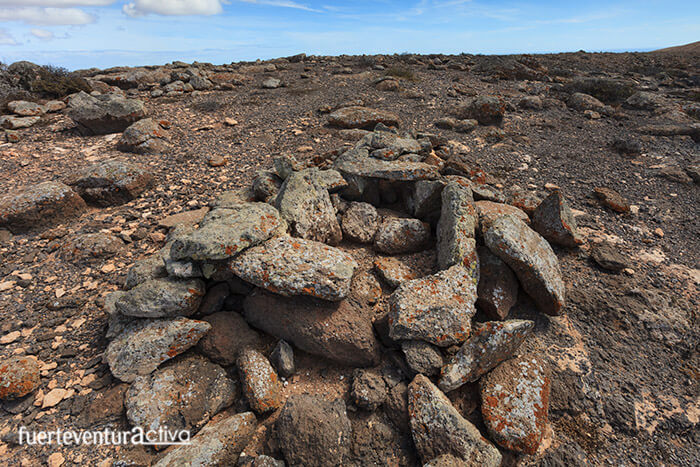
The mahos, the first settlers of Fuerteventura, built structures by piling up stones. These spaces were related to places of worship, and there they performed their rituals. They also buried their loved ones in cists.
All these manifestations are part of our archaeological and cultural heritage. They have been standing for centuries. That is why it is essential that you do not disassemble or add stones to the mounds that you find in the natural space, especially those that are in ravines, slopes or mountain peaks.
Engrave or daub stones.
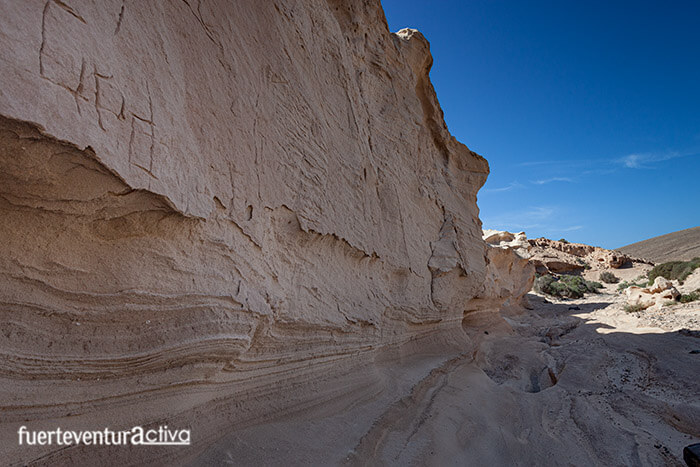
Surely most of you will agree that painting or scratching stones has a negative visual impact. However, it can also mean the destruction of archaeological sites.
We explain it to you
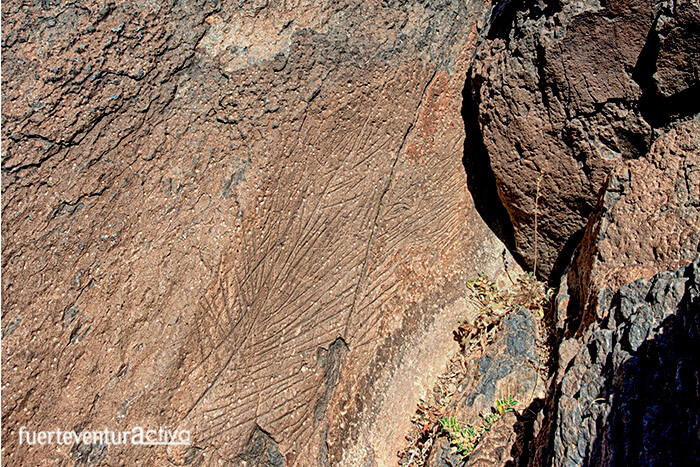
The Canarian aborigines brought culture, speech and writing from their places of origin. In the Canary archipelago, but especially in Fuerteventura and Lanzarote, stones engraved with two types of alphabet have been found, called by researchers: Líbico-Canarias and Líbico-Berber. Unfortunately, Canarian aboriginal writing can look like simple “scratches” on a wall.
These are some examples
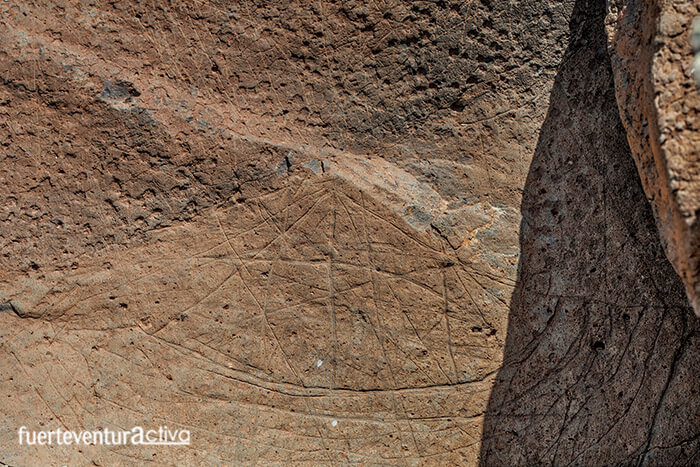
The ignorance that these lines tell the cultural history of our ancestors encourages certain people to draw on top of it, causing the destruction of an extraordinary source of knowledge, which is yet to be discovered.
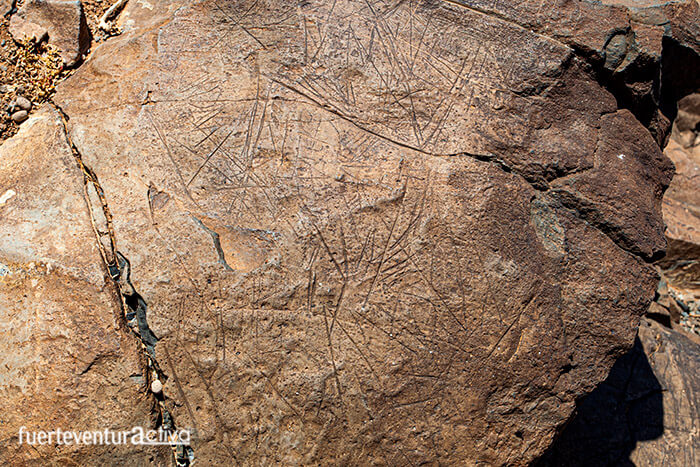
It would be comparable to visiting the pyramids of Egypt, the National Gallery in London, the Louvre Museum, or the Prado Museum and doodling on the paintings exhibited there.
Fuerteventura6

